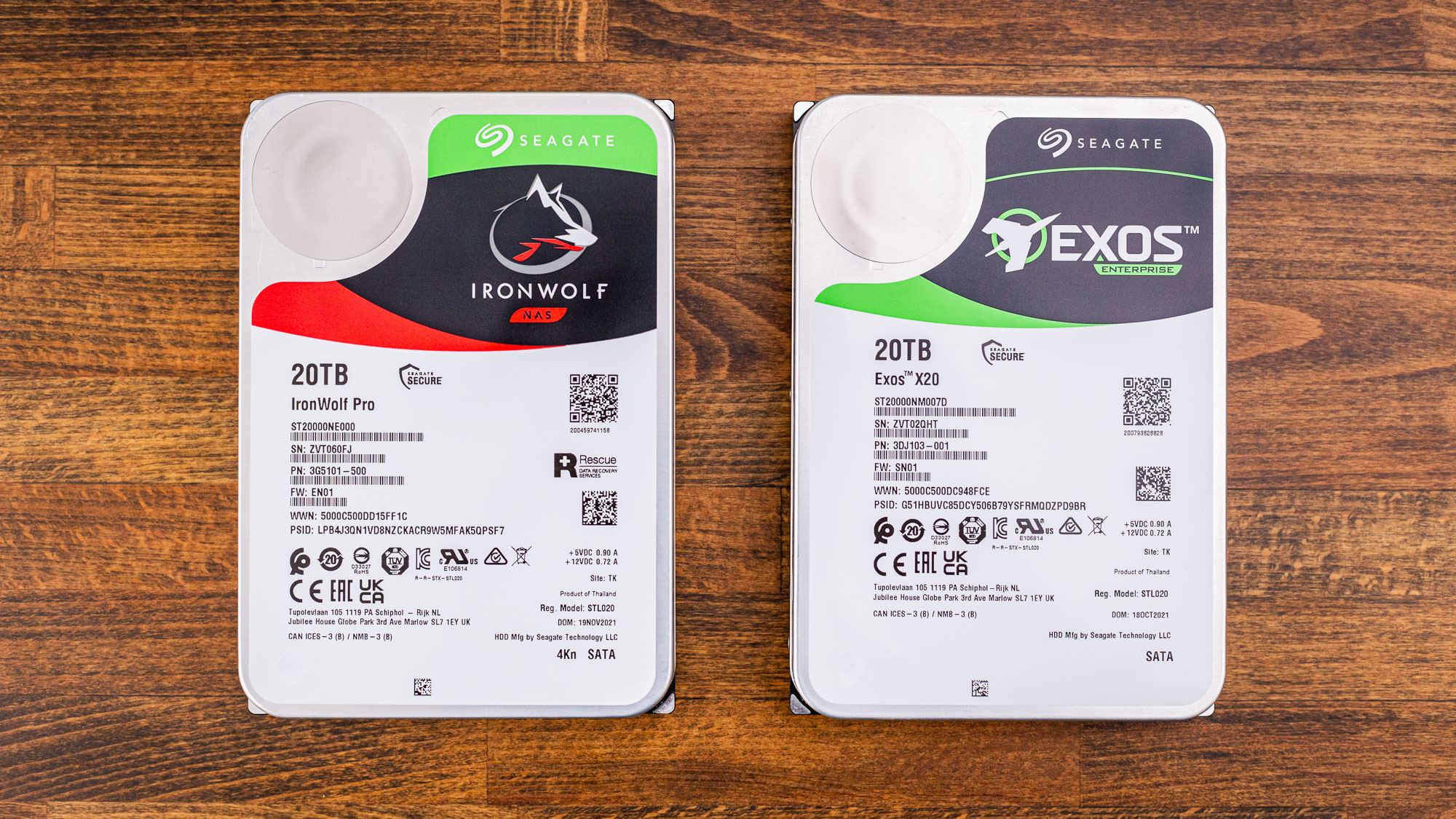Tom's Hardware Verdict
Seagate’s IronWolf Pro is a solid choice for NAS and workstations and includes free data recovery coverage for three years, while the Exos X20 slots in with higher workload and reliability ratings for servers and surveillance systems. Both drives maximize capacity with no significant performance compromises but come at a premium for the highest-capacity 20TB models.
Pros
- +
High storage capacity, particularly for CMR
- +
Sufficiently fast for the different use-cases
- +
Clear-cut warranty with good reliability and support options
Cons
- -
You pay a premium for the highest-capacity 20TB models
Why you can trust Tom's Hardware
Beyond NAS, Seagate lists the IronWolf Pro as ideal for video production, workstations, and servers. The Exos X20 is instead ideal for data centers, big data applications, distributed file systems, surveillance, backup, and more, making it a contender for the title of the best hard drive.
Seagate’s Exos X20 and IronWolf Pro 20TB mechanical hard drives (HDDs) have 20TB of capacity and employ nine platters that spin at 7,200 RPM, making them well-suited for comparatively-speedy storage of bulk data. The Ironwolf drive targets NAS and workstation users, while the Exos-branded drive is designed for enterprise use, meaning these are top-notch drives designed for multi-drive environments.
Achieving this sort of capacity often requires novel recording technologies, like energy-assisted magnetic recording (EAMR) through either heat-assisted magnetic recording (HAMR) or microwave-assisted magnetic recording (MAMR). The idea in both cases is to ease the process of writing data to the magnetic surface by employing some form of energy to enable the magnetization of ultra-tiny bits on the platter, with HAMR using lasers and MAMR using microwaves.
Alternatively, overlapping the write tracks on the platter allows for higher density in a process known as shingled magnetic recording (SMR). However, this comes with a performance penalty, particularly when writing data, due to necessary background reorganization. SMR drives remain popular for certain workloads that enjoy plenty of idle time, such as backups and archival use.
Seagate was able to go with the conventional perpendicular magnetic recording (CMR/PMR) technique with these drives, so it doesn't employ the more exotic recording technologies. These types of drives perform better, but it’s also possible to use multi-actuator technology (offering independent data paths) to boost performance and density.
Potential competitors include WD’s 20TB OptiNAND drives that rely on energy-assisted perpendicular magnetic recording (ePMR) and use flash memory (NAND) on the HDD to store and retrieve small bits of data, thus improving performance.
Seagate, for its part, believes that NAND isn't the way to go for its target markets. Both approaches use drives filled with helium that is more than seven times thinner than air. This allows the platters to spin more smoothly and with less friction. According to WD, helium-based drives also run cooler and are humidity resistant. As a side effect, capacity and reliability can be increased all while having higher efficiency due to lower power draw. Let's see what that looks like in action.
Specifications
| Product | Seagate IronWolf Pro | Seagate Exos X20 |
|---|---|---|
| Capacity | 20 TB | 20 TB |
| Pricing (USD) | $599.99 | $499.99 |
| Cost per GB (Rounded) | $0.030 | $0.025 |
| Interface | SATA | SATA, SAS |
| Technology | CMR | CMR |
| RPM | 7200 | 7200 |
| Sustained Transfer Rate | 285 MBps | 285 MBps |
| Cache | 256 MB | 256 MB |
| MTBF (Hours) | 1.2M | 2.5M |
| Workload Rating | 300TB/Yr | 550TB/Yr |
| Warranty | 5-year | 5-year |
These two drives are very similar internally but are geared for different markets — the IronWolf Pro is for NAS and workstations, while the Exos X20 is headed for enterprise racks.
NAS, or networked-attached storage, is particularly useful for small- and medium-sized businesses (SMB). Beyond NAS, Seagate lists the IronWolf Pro as ideal for video production, workstations, and servers. The Exos X20 is instead ideal for data centers, big data applications, distributed file systems, surveillance, backup, and more. In both cases, Seagate offers very high peak capacities while promising reliability and consistent performance. Both drives have environmental sensors for purposes like measuring rotational vibration (RV), but the Exos X20 focuses on efficiency with the trademarked PowerChoice and PowerBalance features while the IronWolf Pro is optimized for NAS with AgileArray.
Get Tom's Hardware's best news and in-depth reviews, straight to your inbox.
The two drives currently cost roughly the same, which is not surprising given that they have similar hardware. Of course, the price per GB is quite high, paid as a premium to get CMR at this high of a capacity.
Both drives operate at 7200 RPM with a maximum sustained transfer rate of 285 MBps and come packing 256MB of cache. While both come with SATA connectivity, the Exos X20 is also available with the 12 Gbps SAS interface. Due to how these drives are segmented, the Exos X20 has a higher mean time before failure (MTBF) rating of 2.5 million hours compared to IronWolf's 1.2 million, and a workload rating of 550TB per year versus 300TB per year for the IronWolf Pro. Both drives come with a 5-year warranty.
Software and Accessories
The IronWolf Pro comes with two additional features: the IronWolf Health Management (IHM) system and three years of Rescue Data Recovery Services. IHM can be enabled for a NAS system to add “prevention, intervention, and recovery recommendations to ensure peak system health.” The Services offer in-house facilities with a claimed recovery rate of 95%.
A Closer Look
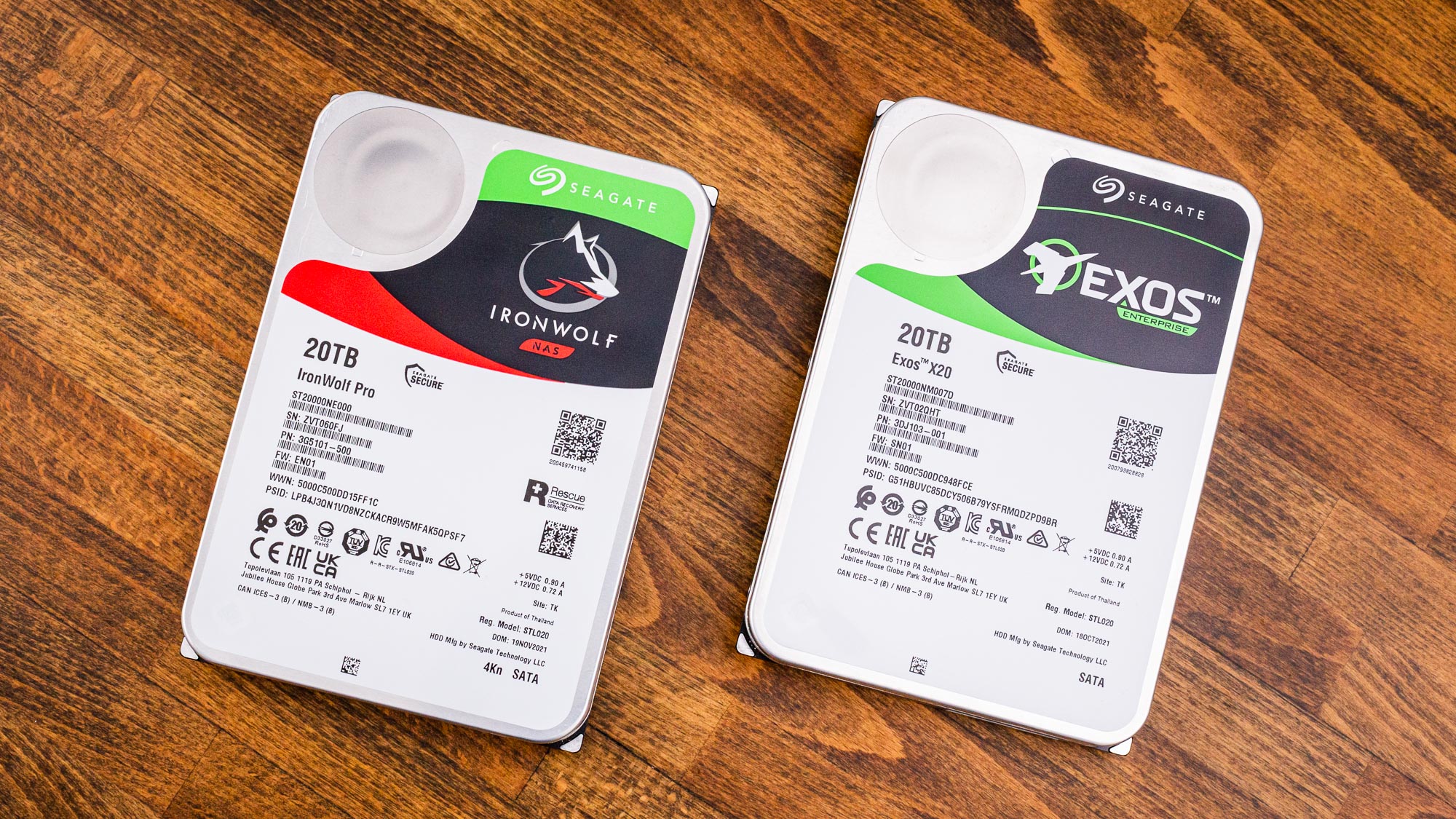


These are your standard, friendly, 3.5” form factor hard drives. The labels are a bit different but are otherwise subtly attractive. Ours both use a SATA 6Gbps interface.
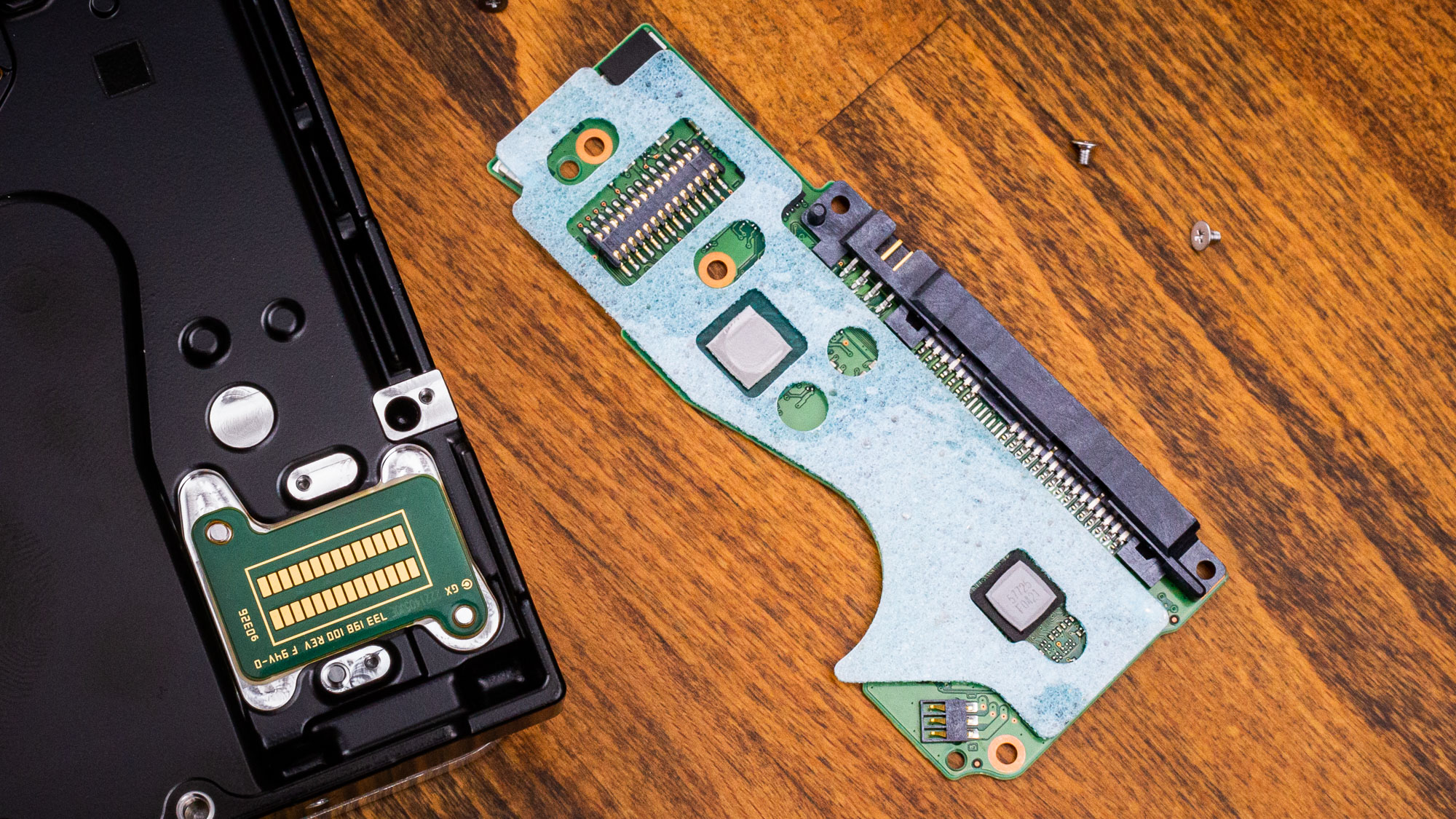


Here we have the control board with connectors, utilizing foam protectant.
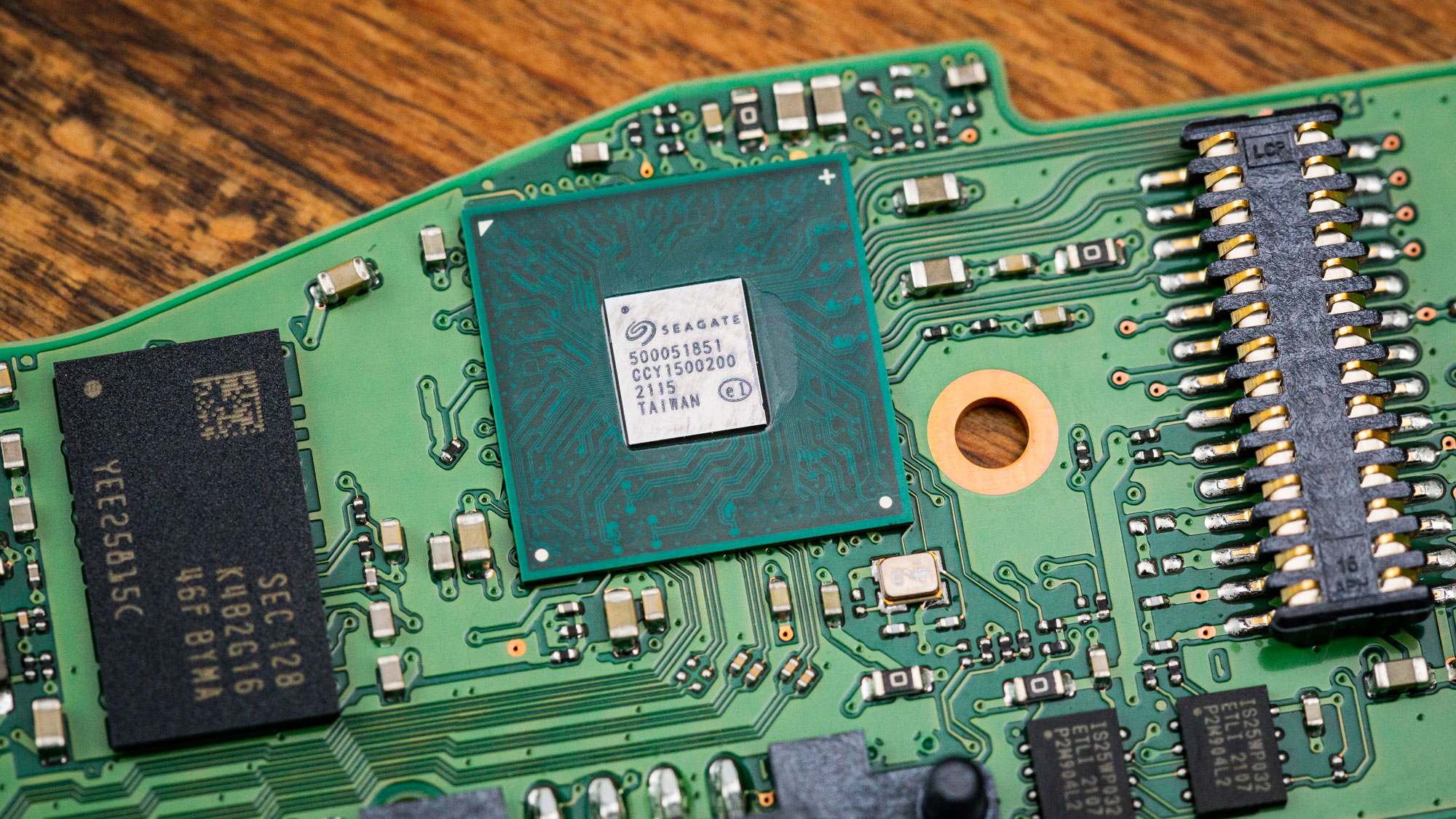
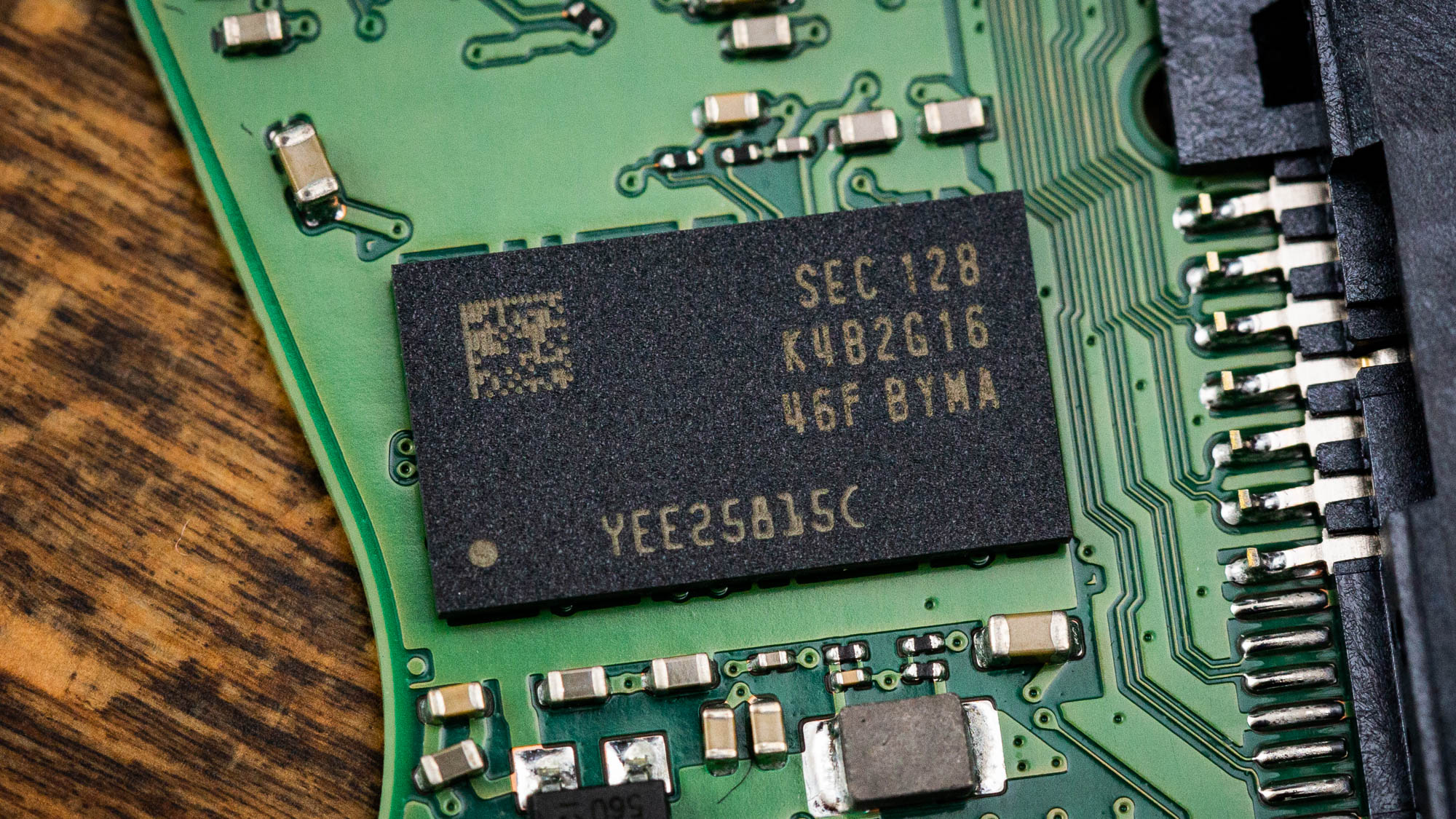
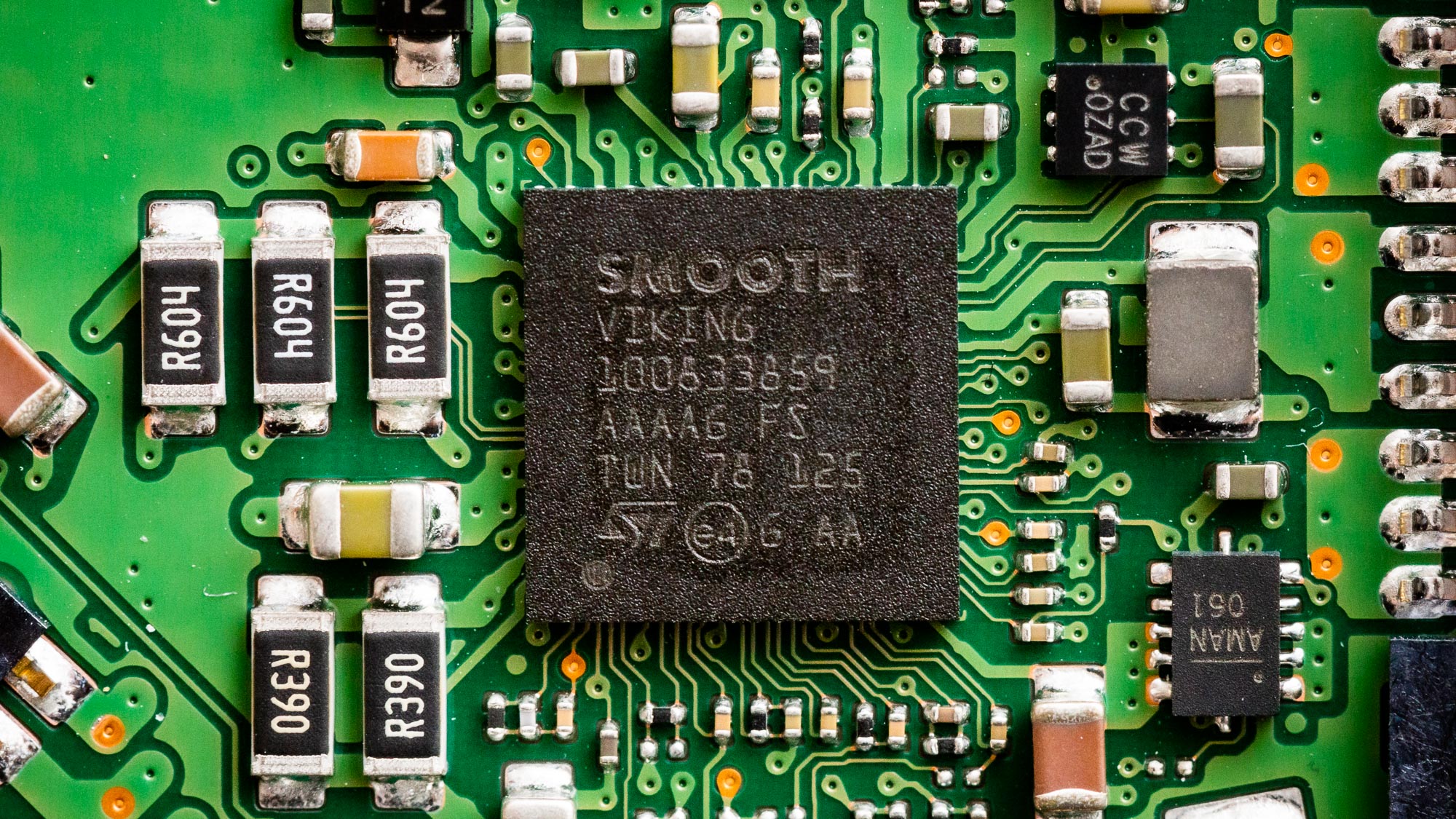
We can identify three primary components: the spindle motor controller, the main drive controller, and the cache. The spindle motor controller is essential to the drive’s mechanical operation and is labeled SMOOTH VIKING; STMicroelectronics manufactures this SMOOTH chip of the VIKING type. Seagate’s main drive controller is the 500051851 and is reminiscent of microcontrollers used for solid state drives (SSDs), which are often ARM-based.
The cache is K4B2G1646F-BYMA, which is Samsung DDR3L. DDR3L runs at a lower voltage than DDR3 and, as a result, uses less power; this particular module is 2Gb (256MB) in a 128M x 16b configuration. Cache on an HDD is not the same as on an SSD, as it is usually used for metadata rather than write data in an SSD, although the NAND on WD’s OptiNAND HDDs is, in fact, used for metadata.
MORE: Best SSDs
MORE: How We Test HDDs And SSDs
MORE: All SSD Content

Shane Downing is a Freelance Reviewer for Tom’s Hardware US, covering consumer storage hardware.
